I.
The Fire on Keefer Street
Steve Nelson didn’t see any sign of fire when the alarm went off at noon at the Keefer Rooms.
He looked out the door of his room into the third-floor hallway. No one was fleeing. No one was calling for help. It must’ve been triggered by cigarette smoke or burnt toast, he thought.
The Keefer Rooms was a four-storey brick building built in Vancouver in 1913. Residents of the upper levels had bay windows, painted green, with a view of Keefer Street. The ground level was home to the Gain Wah restaurant, where beautiful pieces of barbecued pork always hung in the window, a comforting sight that drew hungry locals from Chinatown and the nearby Downtown Eastside to stop for an affordable bite.
It was September 2022. It had been a bad year for old buildings in the city, with many fires and even a few deaths. False alarms, however, were common.
But the alarm wouldn’t stop ringing, so Nelson and one of his neighbours on the floor stepped out to the fire escape. They spotted people on the roof of the shiny condo building across the alley, a modern addition to the neighbourhood called the Flats, trying to get their attention.
“Your building’s on fire!” they yelled.
That’s when Nelson saw it. In the reflection of the Flats' windows, there was the fire, rising from the roof of the Keefer Rooms.
“The flames were 20 feet high with black smoke — holy crap,” he said.

The fire then burst out of a duct on his floor. The sprinklers kicked into action, flooding the hallway. Nelson ran back to his room, shoving everything valuable he could into his pockets. The water followed him, slipping under his door, and came up two inches before he fled onto the street.
Only then did he realize that Charlie, a tuxedo cat that he shared with another resident, was nowhere to be found.
Anna Lao, a chef at the Gain Wah restaurant, was the first to notice the fire.
She was sitting in the dining room having an early lunch when she thought she heard an intruder fumbling around in the kitchen.
“Boss, did someone break inside?” she asked.
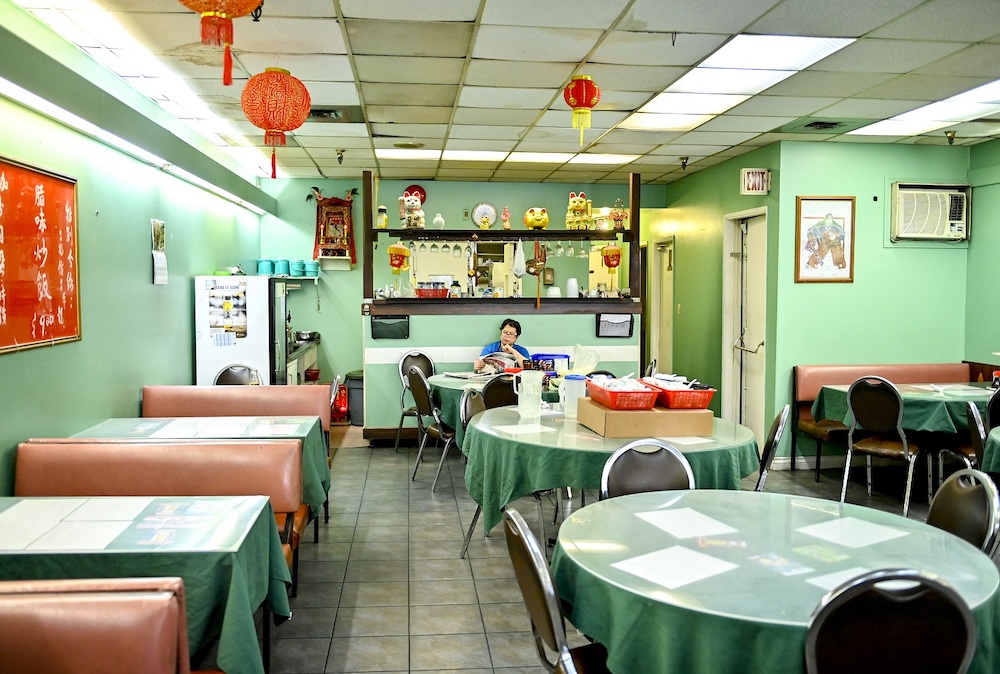
Lao and the owner stepped into the kitchen. There was no one there. But the wok was on fire.
The flames were already out of control by the time they noticed it. Together with the front-of-house staff, they evacuated. By Lao’s estimates, it wasn’t two minutes before the flames travelled up the vent pipe to the extractor unit on the roof, a device that pulls fumes from the kitchen and releases them outside.
The extractor exploded with an ear-splitting bang, heard throughout Chinatown and the Downtown Eastside. Everyone in the area who looked up saw the tall plume of black smoke rising from the Keefer Rooms.
Lao, who lived upstairs, also worried about her cat, named Lucky.
“She loves me too much,” she thought to herself. “I have to get her.”
Nicole Baxter was having breakfast a few blocks away at the Ovaltine Café on East Hastings when she got a call from a friend saying that her building was on fire.
By the time she had rushed over to the Keefer Rooms, her neighbours were on the sidewalk watching their home burn.
The fire department was able to put out the fire fairly quickly but had to make sure that it did not get into the walls.
Baxter was desperate to dash up the stairs to rescue her cat, Lindsay Lowpaw, from her room. But they told her no.
“It’s because of the carbon monoxide,” she recalled one of the firefighters saying.
“I’ve already seen your firemen come out of there without masks,” Baxter replied. “I’m pretty sure that’s not a hassle. My door is right there at the top of the stairs. I’m going in legally or illegally.”
Members of the SRO Collaborative, a non-profit that helps organize tenants in buildings like the Keefer Rooms, made the case to the fire department. Baxter says the camera crews from TV news, who were filming her interactions with firefighters, also turned up the heat for their request.
Eventually, Baxter, Nelson, Lao and others were allowed in to rescue their pets.

Baxter managed to get Lindsay Lowpaw out.
Nelson kicked down his neighbour’s door, where he knew their shared cat Charlie would be.
“She was howling in the corner, soaking wet as the room filled up with water and smoke. I grabbed her and got her out,” he said.
Lao was able to rescue Lucky as well.
“Lucky was really lucky,” she said.
After they returned to the sidewalk, having seen the fire damage and the sopping rooms, they knew they would not be able to return to their homes.
The Keefer Rooms, despite sharing similarities with other single-room occupancies in Chinatown and the adjacent Downtown Eastside, was special.
Commonly called SROs, these buildings tend to have small rooms, with shared baths and kitchens on every floor. Some are notorious for mismanagement, the landlords allowing buildings to devolve into dangerous disrepair. People would take advantage of the lack of security to commit crimes.
However, the buildings of this vintage cannot be denied for what they have to offer: a crucial stock of affordable housing. Nelson, Lao and Baxter had each been paying just under $600 a month before the fire displaced them. That’s four times less than what an average one-bedroom unit rents for in Vancouver.
SROs, which total about 4,000 rooms across numerous buildings, are home to some of the most marginalized people in Vancouver, who often struggle with poverty, disabilities, chronic health problems, mental illness and addictions. Changes in family life, from breakups to disownment, are also a common reason for people moving into SROs on their own.
The Keefer Rooms was in Chinatown, but it was one of those places where the neighbourhood overlapped with the Downtown Eastside.
The Gain Wah was a shared eating place, and the rooms upstairs had a diverse demographic of tenants: white, Indigenous and Chinese, both Cantonese and Mandarin speaking, with a smaller assortment of others from Filipino to Welsh backgrounds.
“It was quite a dynamic,” said Baxter, who had moved into the Keefer Rooms from another nearby SRO. “It was complicated because of the language barrier, but as you got to know each other and learn from each other, you realize that it always doesn’t need words. Sign language works. And actions. Even with our quirks and whatnot, we got along.”
Together with the SRO Collaborative, Baxter helped organize the Keefer Rooms tenants to tackle challenges in their building, challenges felt throughout others in Chinatown and the Downtown Eastside: maintenance of their century-old home, food security in a neighbourhood where healthy choices are hard to come by and overdose prevention in the middle of a public health emergency that’s been worsening since 2016, with street drugs contaminated with fatal quantities of opioids.
Then all that halted when the fire broke out. Baxter and her 38 other neighbours were scattered. She, Nelson and Lao now live in separate SROs.
But in October 2023, about a year after the fire, a hopeful announcement arrived: the province had stepped in and purchased the Keefer Rooms.
Before the fire, the tenants were in the process of creating a model SRO at a time when so many others are at risk of falling apart or landlords chasing tenants out for higher rents. They’re looking forward to moving back in, because there’s still work to be done.
II.
The Chef, the Binner and the Flagger
The three were each looking for a fresh start from their lives when they moved into the Keefer Rooms.
They each had something they wanted to leave behind. By the time of the fire, none of them wanted to leave.
Anna Lao, now in her early 60s, never used to come to Chinatown. There was no need, and she shared a fearful perspective not uncommon among immigrants: Why is there an area with crime and drug use in a place like Canada?
But after personal changes in her life, she left the East Vancouver house where she used to live and moved to Chinatown, where she found a room for one at the New Sun Ah Hotel on East Pender Street.
Lao worked a wide assortment of jobs, from a designer at Lululemon to a chef at the airport food court’s Fortune Wok.
“I started cooking for my family at seven years old,” she told The Tyee in Cantonese. “My uncle was a chef and he told me not to worry because he could teach me everything I needed to know.”
In the early 2010s, she moved to the Keefer Rooms, where she got a job at the Gain Wah restaurant downstairs washing dishes. When the boss realized she could cook, he gave her more to do, including roasting pork for Cantonese classics like char siu.
Lao’s landlord also hired her to be a caretaker at the Keefer Rooms. The role included everything from maintenance to cleaning to painting. Her neighbours quickly became her friends.
“I’m not scared of the people here anymore,” she said. “I can see why people would end up down here. Maybe it’s family trouble. But we have a family here too.”
Steve Nelson had been living in a basement off Commercial Drive.
“Then the job ended and the girlfriend went and things kinda went south, and I magnetized towards the Downtown Eastside.”
He started staying at the Ivanhoe Hotel and the C&N Backpackers Hostel, both on Main Street. The location was perfect for his work as a firefighter with the BC Wildfire Service. But the calls slowed and he went to a cash corner for odd jobs.
In the spring of 2001, he started sleeping under the Grandview Viaduct, surrounded by an industrial landscape of warehouses and work yards.
To make ends meet, Nelson became a binner: collecting recyclables and refunding them for cash. The work was rewarding, but it had dangers.
At a Burger King on Good Friday in 2008, he was attacked and robbed of five bags of empties. Nelson was hospitalized and spent five weeks undergoing surgery for a detached retina and seven fractures in his skull.
“It was crazy — all for $150 in beer cans.”

In 2011, the city began to seismically upgrade the viaduct. After sleeping under it for a decade, Nelson was displaced because his makeshift campground was turned into a storage yard for construction work as part of the upgrade.
It was tiring to search for doorways where he could sleep in peace every night. It was time to find a permanent place to rent.
The following year, he rented a room at the Lucky Lodge on Powell Street. It was so small that he later found out it was an illegal suite.
“The first night, I could feel the mice running over my body as I’m trying to sleep,” he remembers. He came up with a solution: use his spot at the Lucky Lodge as a base to store his belongings and to shower, but sleep outside to avoid the infestation.
But that plan backfired. “Within a week, families of mice were living in my clothes,” he said. “So I was back outside for another winter.”
One day, Nelson was having a meal at Kent’s Kitchen, a cafeteria-style restaurant known for its affordable combos, popular with Chinatown seniors and Downtown Eastside residents alike. There, he saw a housing ad that turned his life around.
The advertisement was for the nearby Keefer Rooms, asking for $514 a month.
“I gave them a call, they had a room and I liked it. It was a quiet, clean building, just off the beaten track.”
Nicole Baxter moved into the Lion Hotel next to the Sunrise Market on Powell Street after her father kicked her out of their Surrey house.
The Downtown Eastside proved to be a convenient place to live, close by the construction site where she worked as a flagger. But after she caught pneumonia and bronchitis, she was laid off.
Spending more time at home and in the SRO, she took it upon herself to do little jobs here and there.
She began cleaning mould in the shared showers. Noticing that the light bulbs were frequently stolen — as they were commonly used as crack pipes, albeit poor ones — she installed a cage over the one in her bathroom. She began cooking meals in the kitchen for her neighbours.
“I couldn’t handle people going hungry,” she said. “I was feeding anywhere between eight and nine people on my own money and on my own time.”

Then one day, the SRO Collaborative came knocking on her door.
Earlier that year, in 2017, the group had registered as a non-profit society. Their mission: help tenants to improve their own lives in privately-owned SROs. They support tenants to run programs inside the SRO and petition landlords as a group for their needs. They receive public as well as grant funding from a variety of sources.
When at a resident’s doorstep, inviting their participation in the group, SRO Collaborative members work quietly and methodically.
“We’re pretty careful,” said Wendy Pedersen, a longtime tenant advocate who founded the collaborative. “We don’t want them to get freaked out and block the tenants in any way from doing their work.”
Baxter helped build a committee at the Lion that at one point totalled 27 tenants, who came up with a wish list of fixes they submitted to the landlord.
“We sat down and looked at all the issues in the building that we wanted done,” she said. “We picked the five easiest things and worked our way up to the harder, more complicated things.”
For example, tenants kept slipping on the stairs. It happened to Baxter one day, right in front of the landlord.
“You’re going to make me a rich person if you keep this up,” she had said. “The stairs don’t have any gripping on them. It’s going to be so easy with a lawsuit. And that’s going to exist for every tenant living here.”
That day, the landlord started measuring the stairs. The gripping was changed out the day after.
By the time the pandemic hit, the building committee already had a strong distribution network for delivering harm reduction supplies for drug use to tenants. Switching to food and supplies like soap, bleach and PPE was easy.
But each SRO has its own culture. In the Lion Hotel — with 74 rooms, most of which were home to men — Baxter found her personality clashing with others.
“Building life can get a little bit hectic,” she said. “Around COVID, with everybody locked down, and there was just too much tension. When you have a dominating female around dominating men, it can get to be like two bucks in a field. You know what I mean?”
In 2021, she left for a new SRO: the Keefer Rooms.
III.
A Four-Storey Village
The first month sleeping at the Keefer Rooms was hard for Steve Nelson.
It was too quiet. He was used to his spot under the bridge, with the roar of trains and traffic. “I actually did go to sleep outside a couple of nights that first week,” he said.
But he soon got used to life in the building.

There were friendly neighbours like the person known as the DVD guy, who was the first to welcome Nelson. Everyone on the third floor had to pass him because his room was closest to the stairs. The man had a collection of 4,000 titles, ones that he bought and others he burned, and he would lend them out to his neighbours.
Nelson would always help Anna Lao with odd jobs like fixing doors, and the two became friends. Lao, knowing that Nelson was a binner, would give him bags of empties she collected. She often found things tenants needed, such as shoes for one who returned home from the hospital barefoot.
There was the lack of a front desk at the Keefer Rooms, which meant that tenants had no choice but to band together and tackle security issues themselves. Squatters occasionally followed tenants into the building or snuck in from the fire escape to sleep in common areas like the showers. Nelson said confronting them could be awkward, but necessary: “Hey, you’ve been in the bathroom a long time! Are you still alive? Do you even live here?”
There was the Gain Wah restaurant downstairs, which fed many of the tourists who came to Chinatown, but owner Andrew Leung was also conscious of catering to low-income locals by keeping prices affordable.
“My wife has been asking me about raising them,” Leung told The Tyee a few years ago. “Chow mein everywhere else is $15, $16. But I said no. I’m charging $10. Why? I’d rather keep my prices down than spend money on renovations and increase the price. Why would I want to do that? I’d rather give back to the customer first.”
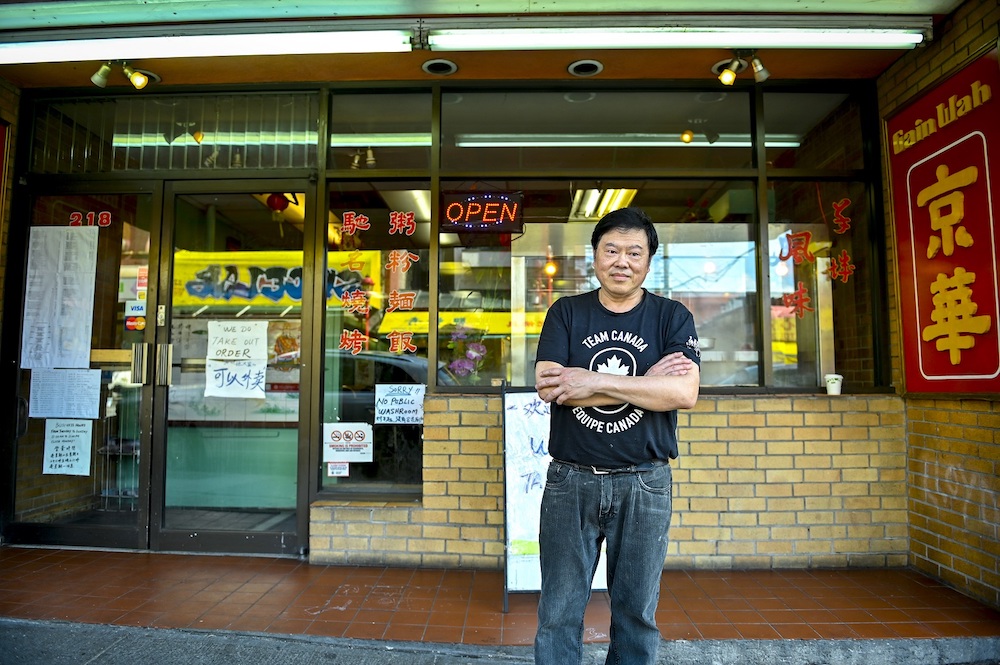
Nelson liked to cook, too. The Keefer Rooms had only one shared kitchen, and he took it upon himself to do Christmas breakfasts of eggs, sausages and pancakes for the building. The ingredients were donated by a catering company he befriended on his binning route.
By the time Nicole Baxter moved in, with ideas for different programs courtesy of the SRO Collective, it was the middle of the pandemic.
“It was really easy to establish those relationships once I was able to talk to [tenants] and know what their needs were and what their wants were,” she said.
There was pandemic funding for a grocery program, with fresh produce coming weekly.
The SRO Collaborative also received funding for meals. Partnering with Gain Wah, they distributed coupons to tenants upstairs for meals in the restaurant. Lao would be the one to hand them out once a month. Some of the tenants used their coupons to bring their homeless children out for dinner.
Another important SRO Collaborative program is founding what the group calls TORO, or Tenant Overdose Response Organizers, for SROs. According to the province, 28 per cent of overdoses happen in supportive housing and SROs, stressing the importance of this life-saving work. The SRO Collaborative now has organizers in 40 buildings.
Nelson signed up and was the one to distribute naloxone kits and train his fellow tenants on administering the opioid antagonist that can reverse the effects of overdoses.
Educating his neighbours saved Nelson in turn. One day, he invited two people selling empties and scrap metal up to his room. He’s not sure what happened after. A neighbour noticed his door open and his body on the floor.
When he came to, he was in an ambulance. Despite not being a drug user, Nelson was told that he had overdosed.
“Nobody can tell me what happened,” he said. “Apparently I was Narcan-ed five times.” Narcan is a brand name of naloxone.
Even though the tenants didn’t own their own homes, these efforts helped instil a sense of ownership.
“We’re not trying to ‘build’ a community — I would say that’s not the right word — but to cultivate the community that’s already there,” said Pedersen of the SRO Collaborative.
“Tenants want to do stuff to be helpful. Not just at the privilege of the landlord, but to do it as a base of tenants.”
IV.
Out on the Sidewalk
That September day in 2022 when the Keefer Rooms went up in smoke, Vancouver Fire Rescue Services confirmed that the source of the grease fire was the Gain Wah restaurant.
The last people out of the Keefer Rooms were a father and his two children, who were staying on his floor, says Pedersen. They were sleeping through the alarm and the team at the SRO Collaborative was able to wake him up with a phone call.
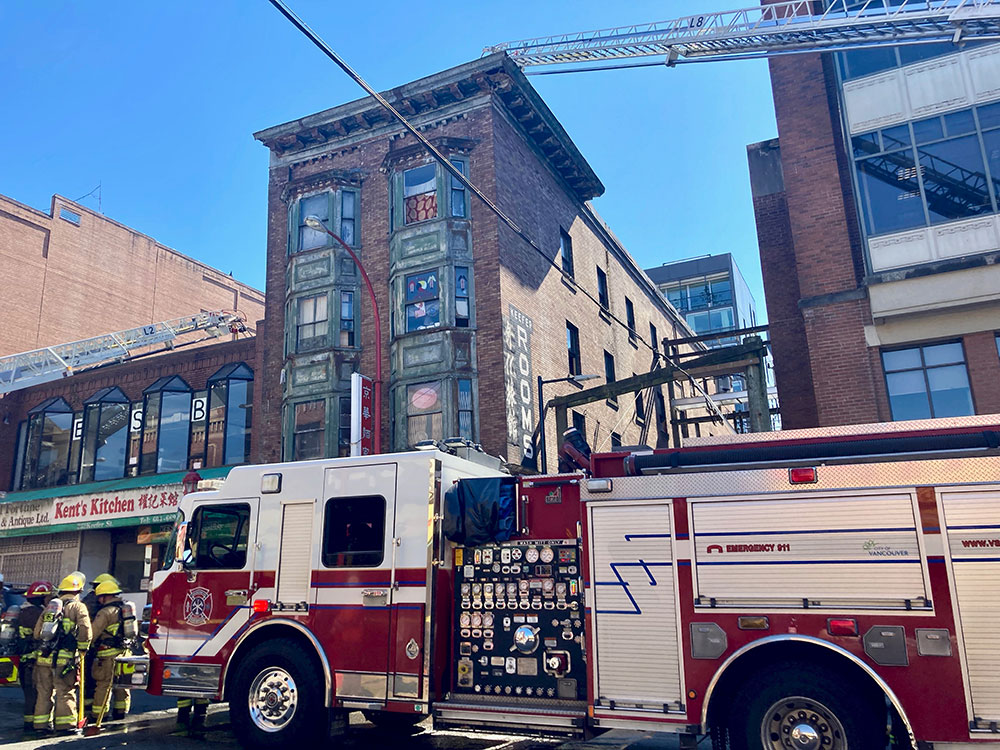
The owner of the Keefer Rooms, Christopher Wall, had his employees help most of the tenants find housing in a number of his other SROs in the area.
Nelson, however, was one of the last in line for a room, and he was told by the private relocator to go to an emergency shelter instead. Given his routine, he decided not to. So he slept on the sidewalk in the back alley to keep watch.
There were some other tenants in such trauma from the fire that they spent days sitting in front of the building, says Pedersen.
One night, to Nelson’s horror, he saw his own possessions bundled up at the top of the fire escape by looters. By the time he and the other tenants were allowed to return to their rooms a week and a half later, his room had been rifled through. Whatever security had been hired was not good enough, he said.
The same happened to Lao. She treasured her wardrobe, having worked in clothing manufacturing in her birthplace of Macau, China. It was painful for her to return to her room to see that the looters had taken some of her designer items.
Nelson, who says he was not notified of any deadline to take his belongings from his room following the fire, was passing by the building the following week when he saw a cleanup crew emptying it. In the hands of one cleaner was an amp that the DVD guy, who had since passed away, left to Nelson.
“Is that what you do to people’s lifetime of accumulated stuff?” said Nelson. “A lot of people have nowhere to move their stuff, let alone move to.”
In a matter of months after the fire, six former tenants had died. The SRO Collaborative says it could be a sign of what happens when people are displaced. Even though the tenants were relocated to new homes a few blocks from the Keefer Rooms, a relocation is a big disruption to their routines and social networks, especially for those already in poor mental and physical health.
“People tend to dehumanize people in the Downtown Eastside and think that they can just put up with all this stuff,” said Pedersen.
“But it’s not normal.”
V.
A Trust for the Neighbourhood
When the province announced that it would be buying the Keefer Rooms through BC Housing, it also announced the building’s new manager: the new Downtown Eastside Community Land Trust.
The land trust model has been gaining ground in recent years in Canada, functioning as an anti-gentrification tool and steward of affordable housing. Land trusts acquire, manage and develop properties for the mission of affordability, reinvesting revenue in the provision of housing.
The Downtown Eastside Community Land Trust was formed by a number of local groups, including the SRO Collaborative. Keefer Rooms will be the first building that they manage.
“It’s a response to multiple crises that are in the Downtown Eastside,” said Norm Leech, the board chair of the land trust.
“If SROs are the last step before homelessness — and we can protect, preserve and restore them — a land trust seems to be the only long-term sustainable way to provide affordable housing. It will reassure the community that [buildings] won’t fall prey to the profit motive, selling the property or raising the rents,” he added.
Leech, a born-and-raised East Vancouverite with ancestry in the T’it’q’et community of the St’at’imc Nation, says that the land trust model offers a useful alternative to colonial approaches to land — and particularly, what it means to steward it.
“We have a different relationship with land. It is actually a source of health and healing and medicine and connection,” he said. “This creates a sense of responsibility to the land, because it’s not just a piece of property owned by someone else.”
Even when it was owned by a private landlord, the Keefer Rooms’ tenants modelled that spirit.
“It was a really good example of how a building could be,” said Leech. “They had a sense of connection and responsibility towards not only each other, but to the building. We want to build on that example and make it better.”
A number of local groups have also banded together to create a social enterprise restaurant to reopen in the Gain Wah space, hoping to continue its legacy of providing affordable, cultural and healthy food to the area.
BC Housing originally announced that the building would be fully operational by spring 2025 but now anticipates that renovations will be completed later that year, the Crown corporation told The Tyee. It has completed a haz-mat survey and is in the process of securing a design consultation for work that includes window replacements and electrical and fire system upgrades.
The SRO Collaborative will help the land trust to once again develop programs in the building, such as tenant committees, overdose prevention, cultural reconnection, maintenance and fire safety.
The year 2022 proved to be a fatal year for SRO fires. The city counted five deaths and 10 injuries, not to mention over $90 million in damage to buildings.
Earlier that April, the Winters Hotel fire in the Downtown Eastside claimed two lives as it burned down. An inquest found that the building had an outdated alarm and that tenants and staff were provided little to no training on fire safety. There was also no plan to alert a deaf resident in the event of a fire; he died in the blaze.
The following year, the city funded the SRO Collaborative to hire fire safety co-ordinators, lead workshops and train tenants. That’s crucial work for SROs, because not all landlords have kept their buildings up to date or have clear plans in the event of an emergency.
The Downtown Eastside Community Land Trust hopes to eventually own the Keefer Rooms. It’s important for land trusts to own their own land because they cannot otherwise access or leverage the equity, said Leech.
The province told The Tyee that plans for long-term building ownership will be determined at a future time.
“We’re working on educating the province that this is actually a good option and that we have solid plans,” said Leech.
The dream: a real estate portfolio of multiple properties in the Downtown Eastside, completely owned by the land trust on behalf of tenants.
“It would make a difference rather than simply being at the mercy of market forces, profit motives and policy changes. It would be very empowering, not only for the tenants who live in those buildings, but also for the neighbourhood itself.”
Chef Anna Lao had been on the fence about moving back to the Keefer Rooms, but she has decided not to.
“It was traumatic going back and seeing my door, and my neighbours’ doors, all kicked down, and my personal belongings stolen from my room,” she said. “Wouldn’t you be scared, too?”
She still lives in the neighbourhood and is back working as a chef. It’s not for a restaurant but for the Heart Tattoo Society, which hands out meals from a food truck at Main and Hastings. She loves it.
“I really miss the old tenants,” she said, “but now that they know where I am, they come to visit me and have some of my cooking.”
Once fearful of drug use, Lao now carries her own naloxone kit.

Tenant organizer Nicole Baxter, now 50, is living at the Hotel Empress at Hastings and Main, where a number of Keefer Rooms tenants are staying. But they miss their old village of a building.
“The Keefer Rooms is where we felt like we’re at home,” she said. “I think that’s why so many of the elderly gentleman that lived [in the building] quickly passed on, just after we moved out.”
Nelson recently turned 60. After some months in doorways, in loading docks and on friends’ couches, he’s now living in another SRO.
He often goes back to Keefer Rooms to tidy up the entrance. He misses living in a building that he could have a hand in. He misses cooking Christmas breakfasts for everyone. He misses the DVD guy and hopes to turn his collection into a library. He misses the people, and looks forward to moving back in.
“It’s taking too long, but what can you do?” he said. “I want more than a place to hang my hat.” ![]()
Read more: Rights + Justice, Housing, Urban Planning
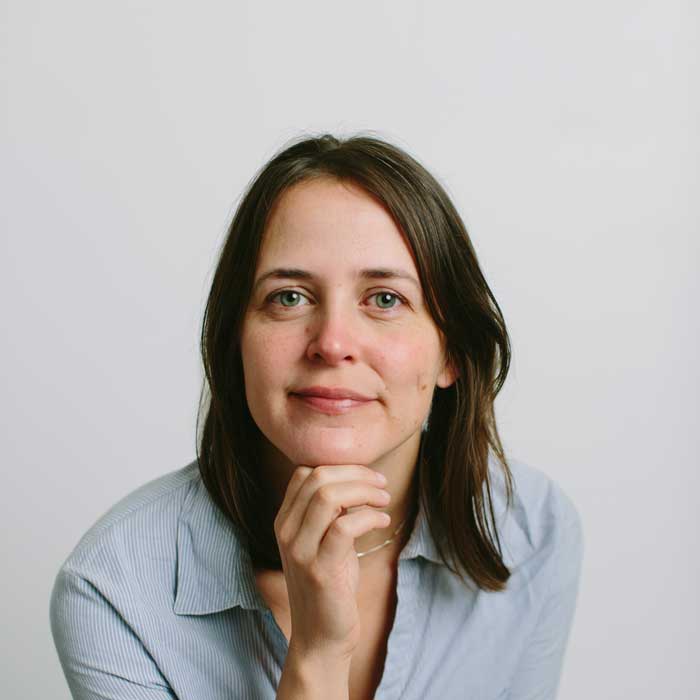










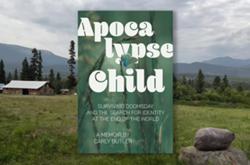



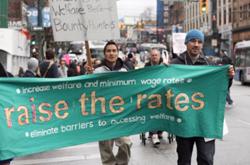

Tyee Commenting Guidelines
Comments that violate guidelines risk being deleted, and violations may result in a temporary or permanent user ban. Maintain the spirit of good conversation to stay in the discussion and be patient with moderators. Comments are reviewed regularly but not in real time.
Do:
Do not: